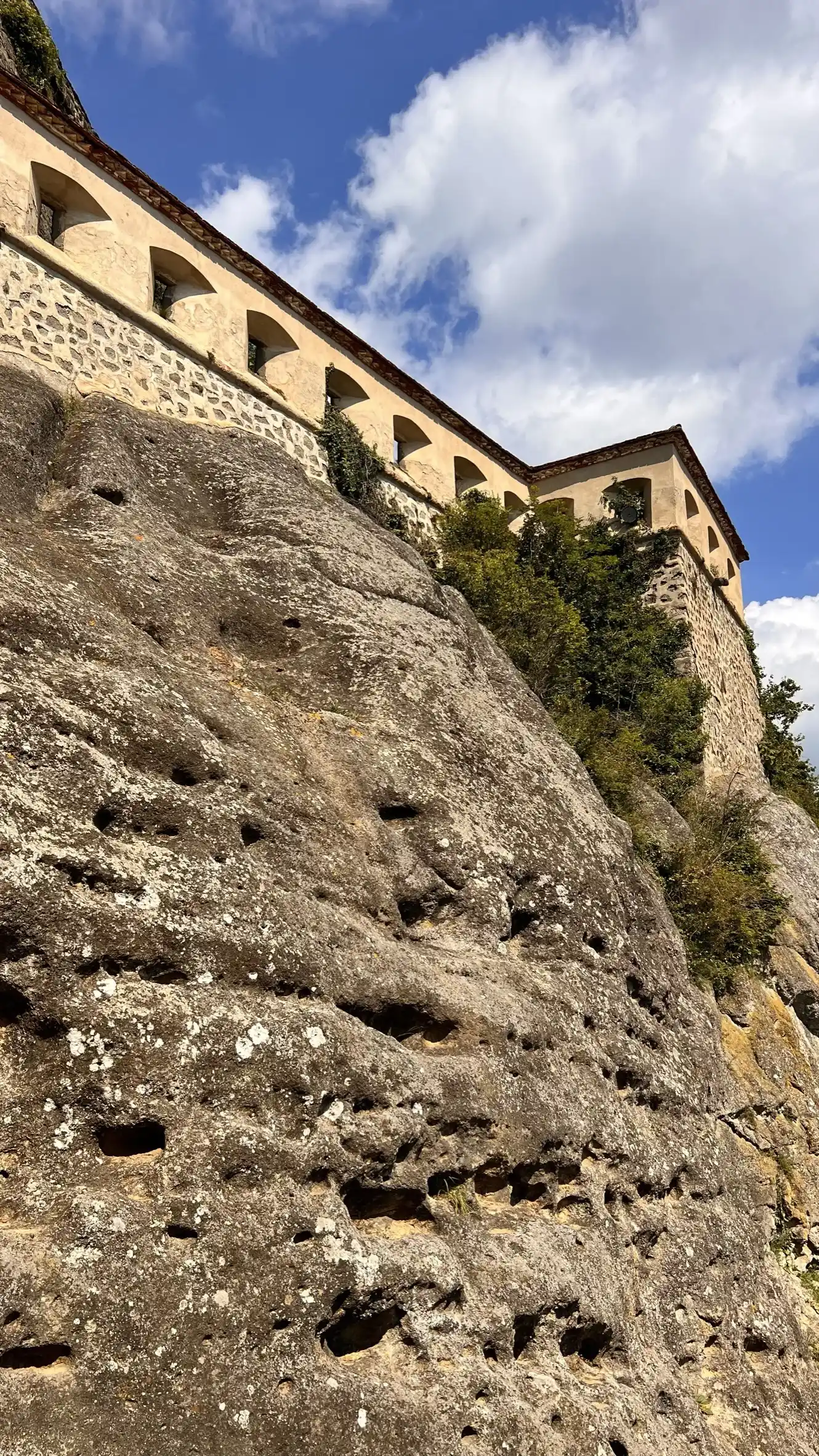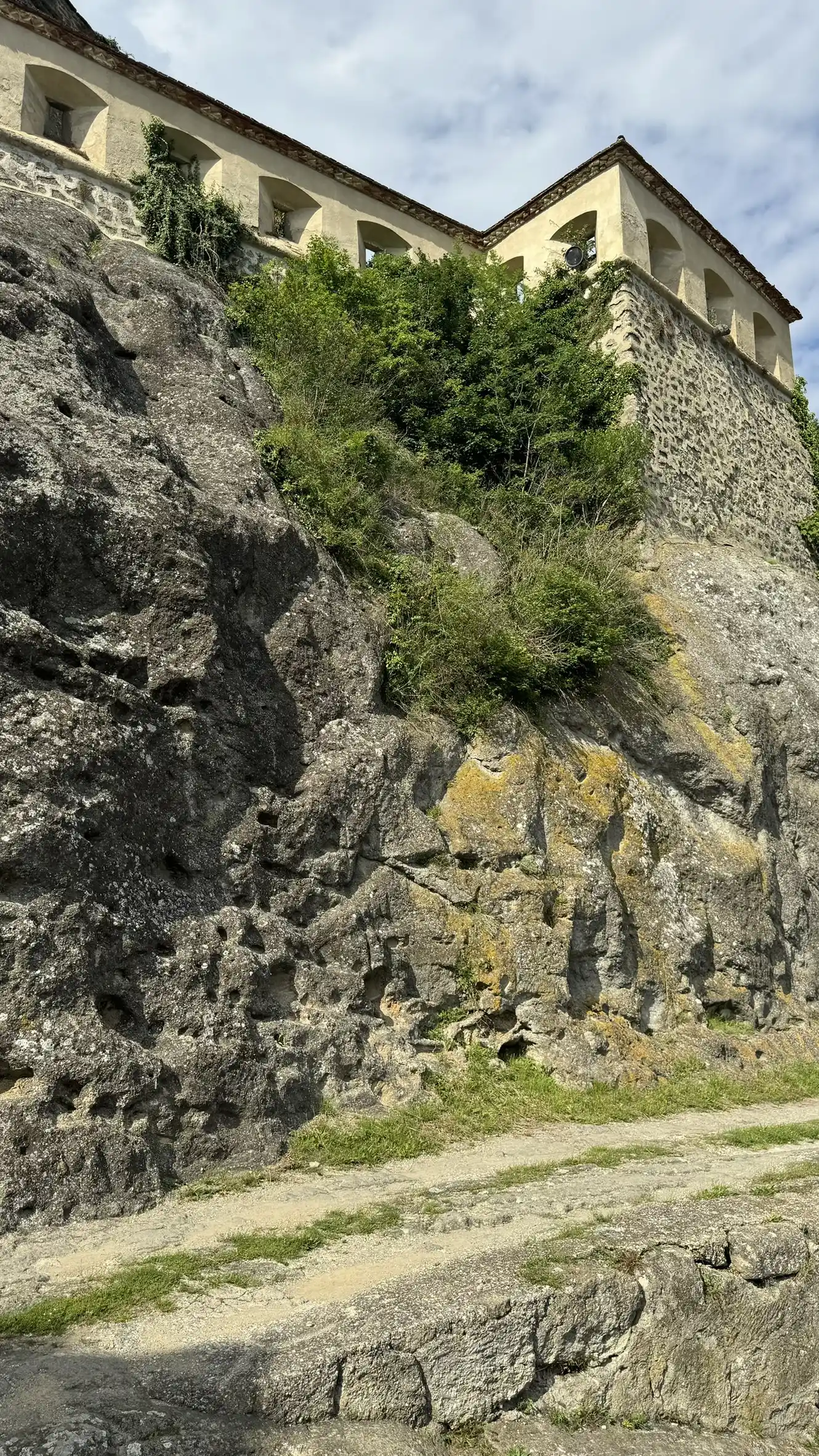Basalt Tuff
Tuff, in front of “Cillitor”



Basalt Tuff
The castle hill – an extinct volcano
The volcanism at Riegersburg dates back to the more recent volcanic period of the Pliocene (around 2 to 4 million years ago). At that time, the landscape was relatively flat and lay approximately 200 metres above the highest point of today’s castle hill. Over a short period, intense volcanic explosions formed a crater that was embedded in the flat landscape. This hollow crater was subsequently filled in by falling volcanic ash and other loose material. These consolidated deposits are known as tuff.
Since the beginning of the Quaternary period (around 2 million years ago), the loose sediment surrounding the vent was eroded away by rain, ice, wind, and other elements, leaving behind the solidified tuff rock – forming the present-day castle hill. The layers resulting from the many intense volcanic eruptions can be clearly seen here and throughout the castle grounds.
The cavities visible in the rock at this location are called geodes. These are solidified gas bubbles and weathering sites.
With a bit of luck, you might find a gemstone here. Green olivine can form in eroded basalt lava.
